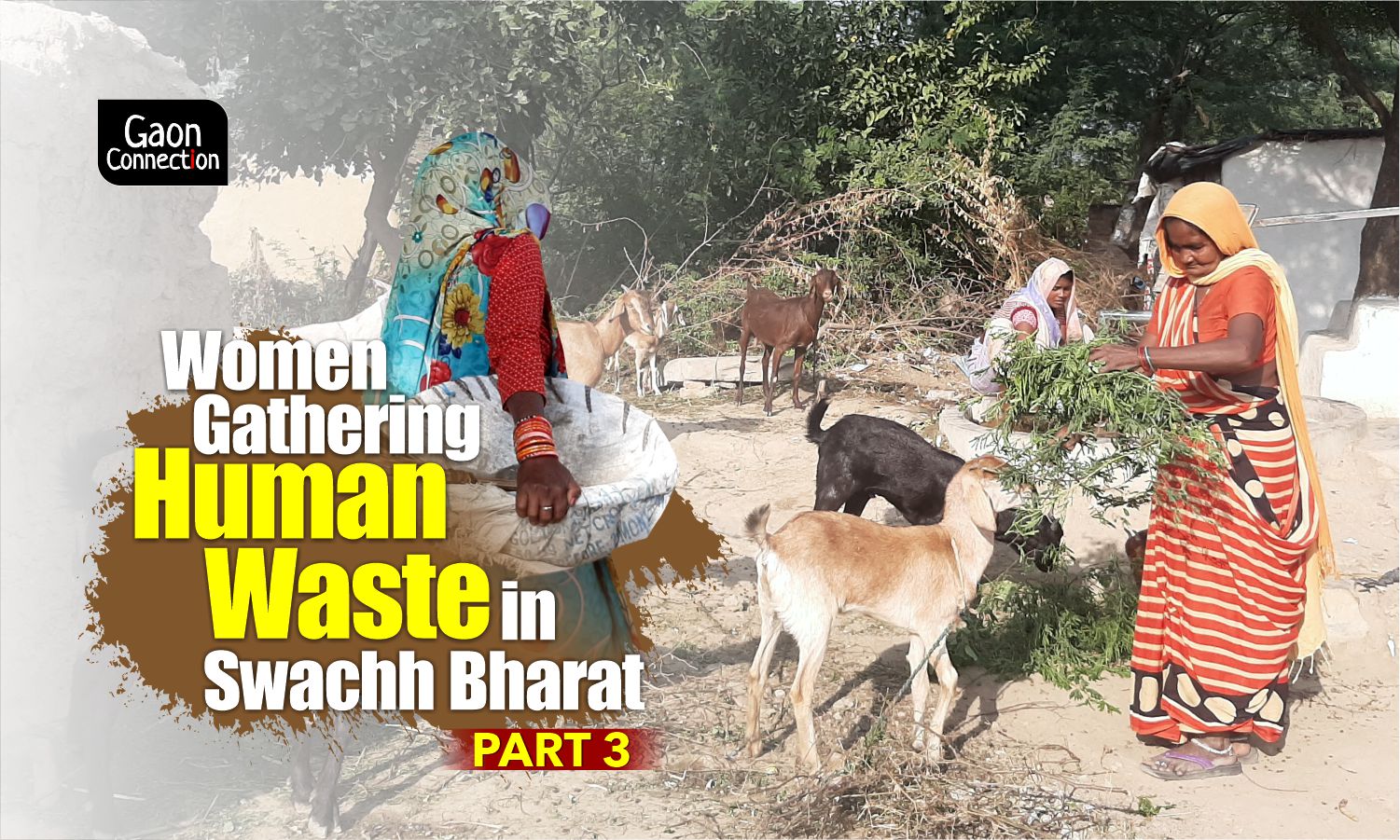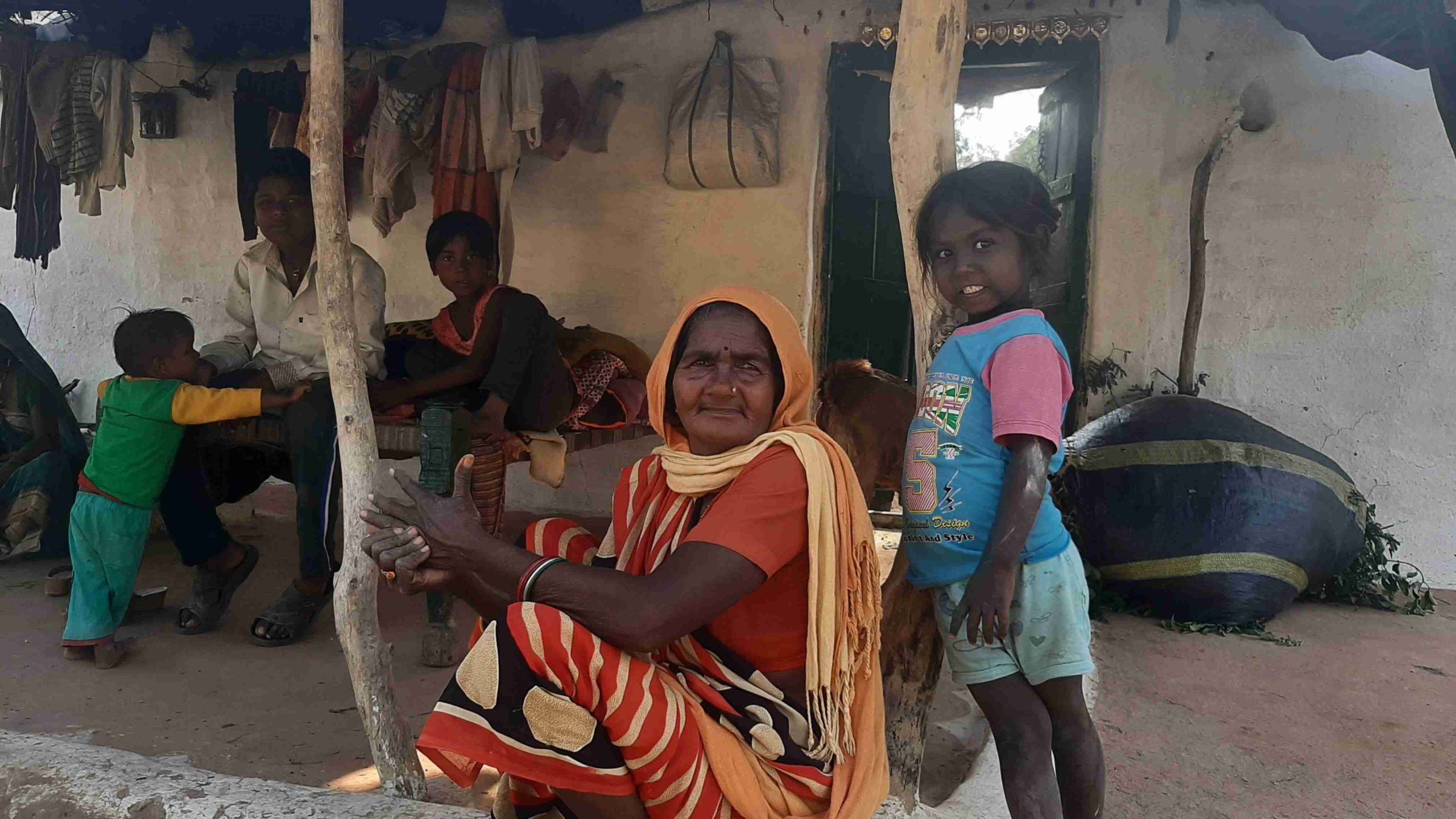Give us work for wages, demand former manual scavengers in UP’s Jalaun
In Jalaun district, more than 500 women have given up manual scavenging, after receiving Rs 40,000 from the government to sustain them for six months. They are relieved to not go back to work that demeaned them, but maintain if they are not given other jobs, they would be forced to go back to their old lives.


Jalaun, Uttar Pradesh
It’s one thirty in the afternoon and the sun is blazing in Chamari village of Khaura block, about 13 kilometres from Jalaun district headquarters in Uttar Pradesh. Badi Bahu, whose name literally translates into elder daughter-in-law, is carrying a bundle of green fodder for her goats on her head.
Badi Bahu does not know her age. She says she could be 60 or 70 years old, but is definitely above 40 years. But, what she does know is her newfound freedom from manual scavenging. Till two-and-a-half years ago, that was her only identity — she carried baskets of night soil.
She pauses to take a breath, sitting down under a shed supported by a pole. “After receiving forty thousand rupees from the government for helping manual scavengers sustain themselves. I bought goats and now raise them. This grass is for them,” Badi Bahu told Gaon Connection. “Finally, it feels like we have regained our lost dignity,” she said, relief on her face.
Although there are eight families belonging to the Valmiki community in Chamari village, only six people, including Badi Bahu, have been given the Rs 40,000 relief under the Prohibition of Employment of Manual Scavengers and Their Rehabilitation Act, 2013. Recipients used up the same almost immediately. Some repaid loans, a few bought goats and a few others married off their daughters. Now, they need other jobs to keep their families afloat.

Although hundreds of women such as Badi Bahu in Jalaun are happy to leave behind manual scavenging, they struggle to meet their everyday expenses. “We are very happy that the filthy work done by our family for generations has finally been stopped with the government’s help and effort. But finding money to feed our family continues to be a struggle. Many of us fear that we may have to resume manual scavenging to feed them,” Badi Bahu said.
The women say they have nothing — no land or money — and the Rs 40,000 provided disappeared in no time. “We don’t need the government to give us a job. At least, give us work for wages so we can sustain ourselves,” Badi Bahu said.
Badi Bahu has three sons and a daughter. “When the government asked us to, I gave up manual scavenging and got forty thousand rupees. I was very happy. I never thought I would ever see so much money in this life,” she narrated.
For generations, thousands of women from the Valmiki community have been forced to do manual scavenging. In a survey conducted in August 2019 in 170 districts across 18 states by the National Safai Karamcharis Finance and Development Corporation (NSKFDC), an organisation under the ministry of social justice and empowerment, as many as 41,068 people from 47 districts in Uttar Pradesh had registered as manual scavengers, but the state government accepted only 19,712 names. According to official statistics, more than 19,000 women still work as manual scavengers in Uttar Pradesh.
In these 170 districts in the survey, 87,913 people had registered themselves as manual scavengers out of which only 42,303 people were recognised by their respective state governments as manual scavengers — that is less than 50 per cent.
Three camps were set up by the Indian government in April 2018 in Jalaun district under the National Safai Karamcharis Finance Development Corporation. In this, 649 manual scavengers had been identified in Jalaun and 546 people received the Rs 40,000 relief, Bhaggu Lal Balmiki, a member of the Uttar Pradesh state-level monitoring committee told Gaon Connection.
Valmiki said that after the relief of Rs 40,000, each family that leaves manual scavenging undergoes can undergo skill development training for two years with a monthly stipend of Rs 3,000. There is also a provision for providing subsidy for manual scavengers on loans amounting from Rs 1 lakh to Rs 15 lakh. But, besides the Rs 40,000, no further effort has been made in Jalaun district to rehabilitate them, he said. No one knows how they are managing their expenditure, he added.
“We are not aware of the remaining people who are yet to be paid forty thousand rupees,” Valmiki, who lives in Jalaun, said. “In October, we received a letter asking for 162 more names who will be given the money. This amount is to help families keep alive livelihoods. It is not for their rehabilitation,” he pointed out.
In its report, the National Safai Karamchari Finance and Development Corporation, an institution working under the ministry of social justice and empowerment, drafted a report on November 30 last year, stating a total of 57,396 manual scavengers have been provided Rs. 40,000 each towards livelihood across 17 states in the country during the period from 2013 to 2018.
In Uttar Pradesh, 32,028 received the sum of Rs 40,000. Maharashtra is second with 6,261 beneficiaries, followed by Uttarakhand with 4,968 people.

“I raised four children with the scraps handed down by villagers. I could have thought of educating them had I been able to feed them well. Those days, keeping them away from hunger was my sole concern,” Badi Bahu said.
Someone used to throw her stale food, others would give her food that the birds left behind after pecking. “My children grew up eating that. We could never provide them new clothes; they always wore villagers’ hand-me-downs,” she continued.
Sunita Valmiki, who is 45 years old, said that even though their problems are far from over, “after we received the money, we stopped manual scavenging”. She now clears dung in village homes. “I accept whatever they give me without protest. Even if we get to work for wages, it will help us survive,” she told Gaon Connection.
There is a complete ban on the practice of manual scavenging in the country, and under the 2013 law, those involved in manual scavenging should be rehabilitated. Survey committees should be set up at the district and state level for this. Those associated with this work and worried about their livelihood should be linked to employment. While these women have been freed of work that chipped away at their dignity, a lot more needs to be done to make them feel human, and empowered.
This is the third part of Gaon Connection’s special series — Women Gathering Human Waste in Swachh Bharat. Read the second part and first part.

